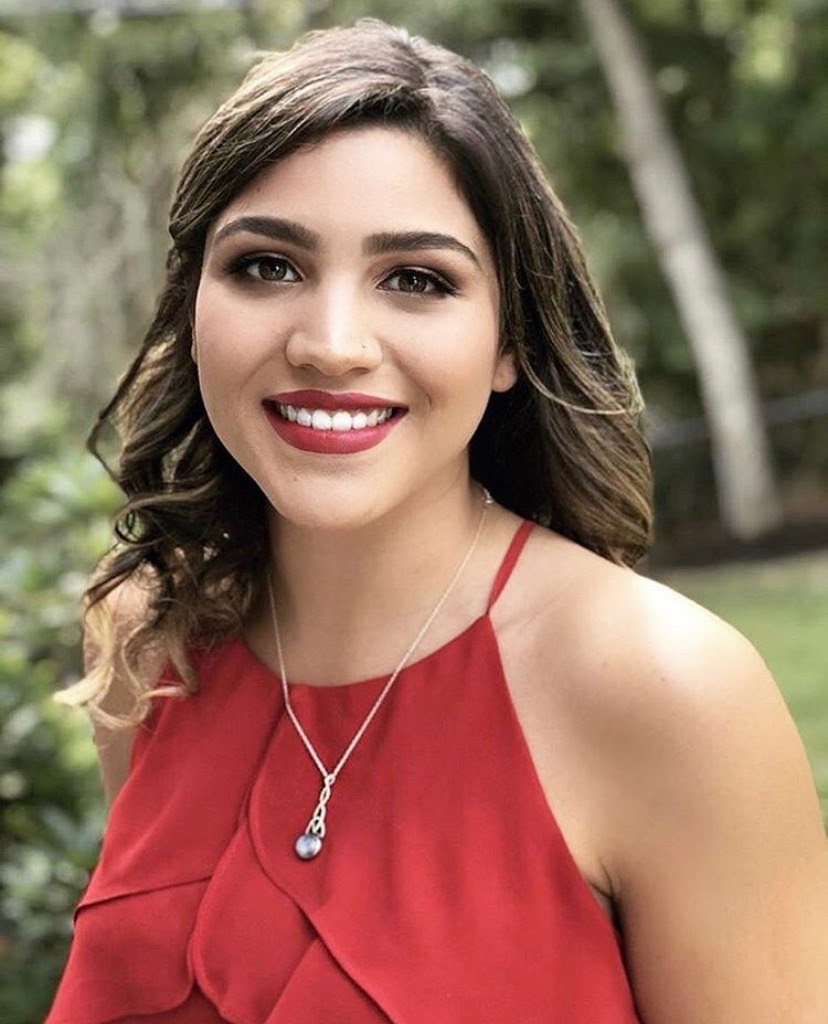Ariana J. Roman, MPH candidate and MCH Trainee at the UIC Center of Excellence in Maternal and Child Health (CoE in MCH)

Ariana was awarded one of three scholarships allocated by the Irving Harris Foundation to the CoE in MCH, which provided her the opportunities to pursue newfound research endeavors related to intimate partner violence (IPV), statewide opioid policies, and SANE nurse programs, in addition to building a network of like-minded peers and leading MCH professionals. Over the past several months, she has strengthened her writing skills as she has aided in the revision process of IPV related manuscripts, burgeoned her data cleaning and coding skills while working on several projects, and pinpointed many of her MCH interests within the field of public health, such as adolescent dating violence, adverse childhood experiences, children and youth with special healthcare needs, resiliency-driven interventions, and Latinx populations. During Ariana’s undergraduate career is when she discovered her deep passion of working with MCH populations as she contributed to a social and developmental psychology lab, studying the associations of prenatal substance exposure and developmental outcomes during early childhood and early adolescence, gained admission into the Ronald E. Mcnair Scholars Program, was a member of the Collegiate Science and Technology Entry Program (CSTEP), and defended her thesis “Prenatal Cocaine Exposure and Caregiving Status: Effects on Early Adolescent Behaviors” while participating in SUNY-Buffalo’s Psychology Honors Program. The amalgamation of all her past and most recent endeavors, which she largely thanks to her mentors, constantly fuels her ambition to contribute to the field of MCH through advocacy, research, and one day, clinical-based practices!
When we hear the term ACEs, I’m sure several connotations and denotations may come to mind. The local people who play poker in your neighborhood may envision the highest value card within a deck, an Ace of Spades. Alternatively, the staff at your local, retail pharmacy store may think of ACE bandages. However, when I hear the term ACEs, known as Adverse Childhood Experiences, I instantly think of Dr. Vincent Felitti et al., (1998), the Behavioral Risk Factor Surveillance System , the National Survey on Children’s Health, an eye-opening book titled “The Deepest Well” by Nadine Burke, and the first project that I worked on with fellow peers during Fall 2019 as a first year MPH student at the University of Illinois-Chicago.
Several months prior to the COVID-19 pandemic, myself and three other MPH students had an eye-opening experience of collaborating on a final project that would only bolster my interests and passions of working with youth populations, upon completion of my MPH. Given my undergraduate experience of interning at the University at Buffalo’s Clinical and Research Institute on Addiction, where I contributed to studies examining associations between prenatal substance exposure and developmental outcomes during early childhood and adolescence, I was beyond eager to collaborate with my classmates when we chose to evaluate the potential relationship between parental separation and youth having higher odds of receiving specialized education plans. Although parental separation has been noted as the most prevalent ACE among American children (0-17 years), according to the Health Resources & Services Administration (2019), there are a plethora of other ACEs that easily come to my mind:
- childhood neglect
- childhood physical abuse
- childhood sexual abuse
- witnessing domestic violence
- encountering violence within the community
- witnessing a family member commit suicide
- residing in a household with mental health problems and/or substance misuse
- lack of a parental figure due to incarceration
It was a difficult process to narrow down, which of the many ACEs, our group wanted to further evaluate, considering that 1 in 6 adults report experiencing four ACEs throughout their lifetime and that 5 of the top 10 leading causes of death are associated with ACEs (CDC, 2019). Yet, given the drastic increase in the amount of American children who reside in single-parent households over the past fifty years, we agreed that our potential findings would be the most generalizable to such youth. Thus, to paint a Rembrandt of the prevalence of parental separation, approximately 23.4% of youth have parents who are either divorced or separated: almost 1 in 4 American children (HRSA, 2019)!
Similar to the acknowledgement of ACEs over the past 20 years, the recognition and range of services (e.g. IEP, 504 Plan, Early Intervention) for children and youth with special healthcare needs (CSHCN) has significantly increased. Approximately, 1 in 5 children in the U.S. are considered to have a special healthcare need (e.g. behavioral, emotional, cognitive delays, chronic health conditions, etc.) and roughly 14% of children receive specialized education plans (National Center for Educational Services, 2019). Following the enactment of the Education for all Handicapped Children Act in 1975, which was renamed to the well-known Individuals with Disabilities Education Act (IDEA) in 1990, there has been vast reform in ensuring that CSHCN are entitled to a germane and free public school education. Most notable to the IDEA is typically the Individualized Education Plan (IEP), which is collaboratively developed by a school’s team of teachers, administrators, therapists, and the child’s caregiver to provide proper accommodations and support for the child to meet appropriate educational goals. Between October-December 2019, myself and peers would become extremely well versed in specialized education plans, especially IEPs.
As we navigated through the contextual underpinnings of ACEs and specialized education plans in the U.S., we also had to consider how social and structural determinants of health may confound or moderate the association between parental separation and youth having higher odds of special education plans. Using data from the National Survey of Children’s Health (2017), we examined how the aforementioned association may be moderated, confounded, or have covariates such as, child age, child gender, child race, ADD/ADHD diagnosis status, depression diagnosis status, parental socioeconomic status, and parental educational level. Our findings indicated that children with separated/divorced parents had 1.21 greater odds of having a special education plan; however, after controlling for all covariates there was no significant association (OR = 0.949, p-value = 0.7367). Although we all idolize seeing an odds ratio (OR) either below or above one, followed by a p-value less than or equal to .05, our findings still galvanize future directions for research.
Despite not having significant results, in stratified analyses, child depression diagnosis status and parental income level were found to be the most significant confounders. Conceivably, children with a diagnosis of depression may require a specialized education plan if their behaviors become maladaptive and impede their ability to perform to their best potential in an academic setting. Additionally, having a child with clinical levels of depression may influence parental separation if both parents have opposing viewpoints on seeking services for the child, means of providing emotional support, and pre-existing perceptions of depression. In regard to parental income level, the first thing that came to mind when looking at our SAS output in November and writing this blog post now, is the overarching influence that social determinants of health (Solar & Irwin, 2010) consistently have throughout one’s lifetime. Given the toxic stress that may arise from low income levels, it is sadly unsurprising that such a factor may contribute to parental separation. Furthermore, having a parent with a low-income level may heighten odds for children receiving special education plans, such that their parent may not qualify or have the time to enroll their child in CHIP and/or Medicaid to detect special health care needs prior to attendance at a public school and less availability to spend time with their child to recognize potential signs of developmental, behavioral, or physical delays. In conclusion, parental income level and childhood depression diagnosis status are realistic confounders in the association between parental separation and odds of having a special education plan, but most importantly, they re-emphasize the impact that social determinants of health have in one’s life and the concept of intersectionality (Hernandez-Saca, Kahn, & Cannon, 2018).
Let’s fast forward to June 2020. How can we extrapolate the information conveyed from our final project and apply it to what has occurred throughout the nation over the past several months? The unemployment rate is the highest it has been since the Great Depression era; children, educators, and therapists had to abruptly transition to online-learning, regardless of specialized education plan status; mental health awareness skyrocketed during the implementation of shelter-in-place orders; and children with separated parents may have been limited in their ability to see or even interact with the parent who they do not live with. Additionally, in Chicago alone, during the first weeks of the shelter-in-place, there was an 18% increase in domestic violence related calls to the Chicago Police Department, indicating that children who may live in those households could have been exposed to their first ACE or added another to their list.
In the past several months, we have witnessed first hand how ACEs, not limited to parental separation, special education plans, and public health efforts transcend well beyond one MCH competency. Eight months ago and today, I self-reflect on how I grew up in a single-parent household and had a 504 plan in high school; contributed to an interdisciplinary public health team as we represented the Community Health Sciences, Epidemiology, and Environmental and Occupational Health divisions within the School of Public Health; expanded our pre-existing knowledge on cultural competency related to ACEs and specialized education plans; applied our critical thinking skills; and communicated our findings to a larger audience. As an MCH trainee, we are instilled with the conceptual framework of MCH leadership, which revolves on (a) self, (b), others, and (c) the wider community. During my first year as an MCH trainee and MPH student, I was able to meet and excel in each facet of the MCH conceptual framework. In conclusion, no one can ever predict what lies ahead in the future, but, I am confident that over the course of my MCH career I will always strive to share and embrace the power that MCH competencies hold.

